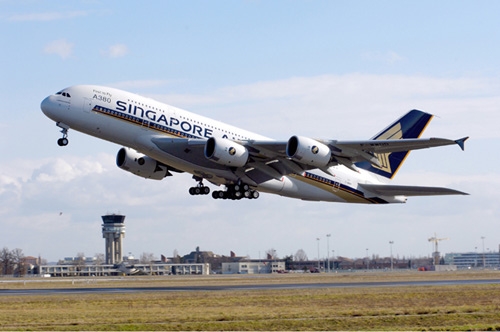
Singapore Airlines net profit soars 56% to $122m
Higher non-operating items boost bottom line.
Singapore Airlines (SIA) earned a net profit of $122 million (+$44 million, or +56%) in the first quarter of the 2013-14 financial year.
The improvement was mainly due to gains from the sale of aircraft and exceptional items, including a net gain of $336 million from the sale of the Company’s stake in Virgin Atlantic Limited to Delta Air Lines, Inc. However a restructuring impairment cost of $293 million was booked on four surplus SIA Cargo freighter aircraft that have been removed from the operating fleet and marked for sale.
Group revenue increased $63 million (+1.7%) to $3,840 million, mainly due to $75 million recognised during the quarter from settlement pertaining to changes in aircraft delivery slots [Note 2]. Passenger revenue excluding the settlement improved marginally over the same quarter last year on the back of 1.8% growth in passenger carriage, partially offset by weaker yields.
Intense competition and unfavourable foreign exchange movements for revenue-generating currencies against the Singapore dollar pushed yields down by 2.6%. Cargo revenue was affected by lower loads (-5.3%) and yields (-5.5%) with overcapacity in the market as well as the weak global economic situation.
Notwithstanding lower net fuel costs from the temporary relief in fuel prices during the quarter, Group expenditure rose by $53 million (+1.4%) over the same period last year, largely due to higher staff and non-fuel variable costs, in tandem with the increase in capacity. Consequently, Group operating profit for the first quarter was $82 million, an increase of $10 million (+14%) over the same quarter last year.
The Group warned though that its operating environment continues to be impacted by the uncertain global economic climate and high fuel prices.
Forward passenger bookings for the next few months are expected to be higher against the same period last year and in line with the planned increase in passenger capacity. However, yields are expected to be weaker as a result of the intense competitive environment. On the cargo front, demand is expected to remain depressed, in turn placing pressure on loads and yields.
























 Advertise
Advertise






